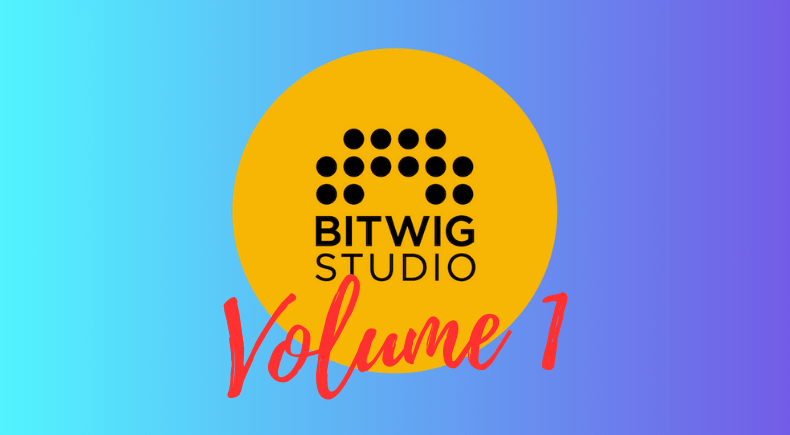10 Bitwig Tips & Tricks Vol. 1

In this episode of TÂCHES TEACHES, we will explore some amazing tips and tricks to enhance your Bitwig experience. Whether you are an experienced music producer, a composer, or just starting out, these tips are sure to help you work more efficiently and creatively. Let's dive right in!
Tip #1: Quick audio conversion with plugins
If you're using a plugin that has its own internal sequencer and generates sound without a clip, I have a neat trick for you. Instead of dragging the MIDI clip onto the Timeline, you can create an empty MIDI clip of the desired length. Simply select the empty clips and press Command + B to bounce them into place. This will instantly convert them to audio, helping you save RAM by disabling the plugin. If you need to make edits, you can easily re-enable the plugin. The best part? This trick works for clips in the Session View as well!
Tip #2: Streamline the time editing functions
Navigating Bitwig's time editing functions can be a bit challenging, especially if you're transitioning from Ableton. To save yourself the frustration of selecting multiple tracks when deleting, copying, pasting, or inserting time, try this workaround. Instead of selecting individual tracks, select a time range in the ruler at the top. This way, your time edits will apply to the selected tracks, and cue markers will move correctly. It's a simple and time-saving technique!
Tip #3: Streamline multi-output setups with templates
Setting up multi-output setups for plugins like XO or Atlas can be quite time-consuming. But fear not! I have a time-saving solution for you. Instead of setting up individual audio channels for each output, create a template. Set up the audio channels you need, color code them, and save them as a template. Now, whenever you need that particular setup, just drag it into your project and ungroup it. You'll have all your audio channels ready to go in no time!
Tip #4: Customize note colors in clips
Bitwig defaults to applying shades of the clip's color to the notes within it. However, you can easily customize this according to your preferences. Just right-click inside the clip, select 'Note Colors', and choose from options such as note channel, pitch class, or velocity. This feature is extremely useful for those who associate specific colors with notes or need a visual representation of pitch or velocity in their workflow.
Tip #5: Post-recording actions for simple takes
Recording multiple takes can be a tedious process, especially when you have to manually edit and arrange them later. Luckily, Bitwig's post-recording actions feature can save the day! Set your loop brace to define the recording area, enable looping, and turn on post-recording actions. Select "Record to Next Free Slot" and set the desired time range. Each take will be automatically recorded to a new clip, making it easy to select the best one later. Comping becomes a breeze!
Tip #6: Preset processing for your recordings
When recording vocals or any instrument, it can be helpful to apply a bit of processing while you're recording. Create a vocal bus with the effects and routing you want. Set up an audio channel for your lead or backing vocals and assign its input to the vocal bus. Now, when you hit record, the effects will be applied in real time. This not only keeps your plugin count down but also ensures a consistent sound throughout your recordings.
Tip #7: Efficient punch-in/punch-out recording
Bitwig's punch-in/punch-out recording feature is a powerful tool for avoiding recording errors or starting from specific points. To use this feature, set your loop brace as the recording area and enable punch-in and/or punch-out. Now, when you hit record, Bitwig will only record within that range. This is useful for fixing mistakes or starting the recording exactly where you want it. Whether you're recording audio or MIDI, this feature has got you covered!
Tip #8: Group effect returns for more control
If you want more control over the effect returns in Bitwig, try grouping them. Create an effect return channel, assign the effects you desire, and then drag the effect return channel into a group or subgroup. This way, your effects will only be available within that group, making it easier to keep your effects separate for different parts or instruments. It allows for more flexible and efficient routing and processing.
Tip #9: Use the Project Panel for notes and organization
Don't let valuable information get lost in scattered notes or papers. Bitwig's Project Panel is a fantastic place to store your chord progressions, lyrics, or any additional notes you need to reference. You can write as much as you like, categorize them into sections, and easily access them within the project file. Keeping everything in one place will help you stay organized and never lose track of your ideas again.
Tip #10: Save templates for quick project setup
Bitwig's template feature is a game-changer for repetitive setups. Save your favorite setups, such as vocal buses, drum patterns, or synth configurations, as templates. When you start a new project, simply drag and drop the template into place. Everything will be set up and ready to go, saving you time and allowing you to focus on the creative process.
By incorporating these 10 tips and tricks into your Bitwig workflow, you can enhance your music production skills and streamline your workflow. From quick audio conversions to efficient recording techniques, Bitwig offers a wide range of features to boost your creativity and productivity. Experiment with these tips and watch your Bitwig game reach new heights. Happy creating and Bitwig-ing!

